Art Fairs
As Car Bomb Rocks Turkey, Contemporary Istanbul Surprises With Brisk Sales
Exhibitors came to show solidarity, not expecting to close deals.
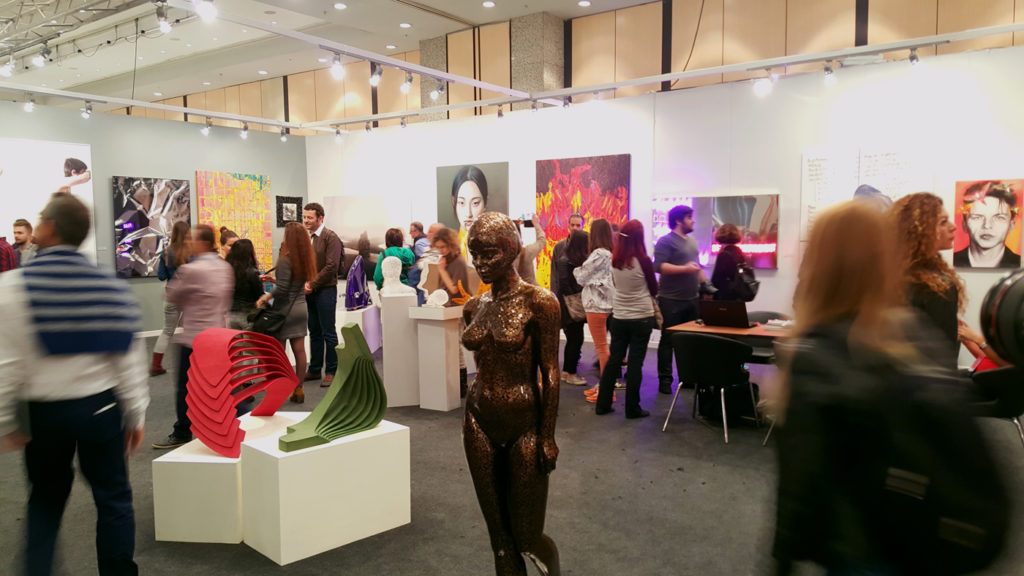
Exhibitors came to show solidarity, not expecting to close deals.

Following the cancellations of this year’s Çanakkale Biennial, and Moving Image and Art International fairs, the 11th edition of Contemporary Istanbul opened yesterday amidst a climate of uncertainty, deepened by a car bomb attack this morning in Diyarbakir.
The market, which has been in decline since its 2012 highs has been further shaken by a summer of terrorism, a failed military coup, and an increasingly repressive series of crackdowns on freedom of speech, which saw over 40 international exhibitors pull out of the fair.
Daylight savings time was abolished this year but many automatic clocks still switched at the end of last month, leading to widespread confusion and the trending hashtag #saatkac, or “what time is it?”
What has been dubbed Erdogan’s endless summertime certainly characterized the mood on the preview day of the fair. Cautious optimism gave way to a certain ebullience as many galleries reported strong sales during the vernissage. Beirut’s Mark Hachem Gallery sold a Wolfgang Stiller sculpture for an undisclosed price “within the first few minutes,” and placed seven other works with local collectors, including a Stephano Bombardieri sculpture.
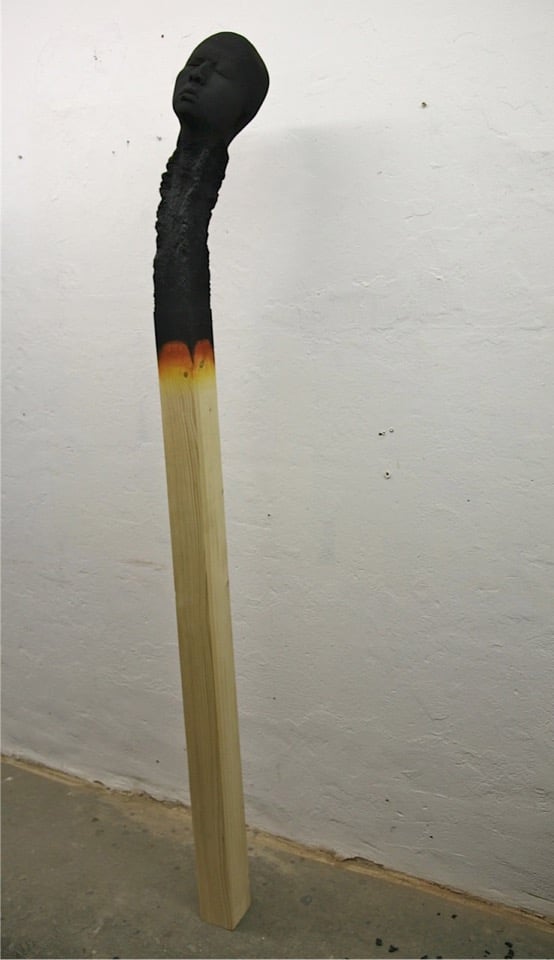
Wolfgang Stiller, Matchstick Man (2016). Courtesy Mark Hachem Gallery
At Paris’ Galerie Lelong, a large, anamorphically compressed Jaume Plensa sculpture White Forest (Lou) was snapped up within the first two hours; at around €280,000 it was among the most expensive works sold at the fair. Halfway through the first public day, Singapore’s Yavuz Gallery was overjoyed to have sold out of their solo booth of Turkish artist SARP’s rather homoerotic photographs of naked men covered with Islamic iconography (priced between $2500 and $10,000) twice over. The overwhelming majority of works sold at the fair were at these lower price points; the few galleries who brought work in a more expensive bracket reported disappointing to no sales.
Istanbul and London-based Pi Artworks sold a silken Gülay Semercioğlu wire painting for $50,000 and four bituminous Kemal Seyhan works for between $5,000 and $20,000, as well as several other works for between $2,000 and $5,000. Two of the smaller Seyhans, which went to London and New York, were the only reported sales throughout the entire fair that were not placed with local collectors.
Dealer Yeşim Turanlı noted that although there were markedly fewer foreign collectors, Turkish collectors made up the lack and sales remained on par with prior years, an assessment repeated by almost all of the galleries artnet News spoke with. Turanlı noted that even “since the coup this summer, we’re not going to see its effects right away,” adding that her first show of the season, a solo of emerging Turkish artist Yuşa Yalçıntaş sold out within two days.
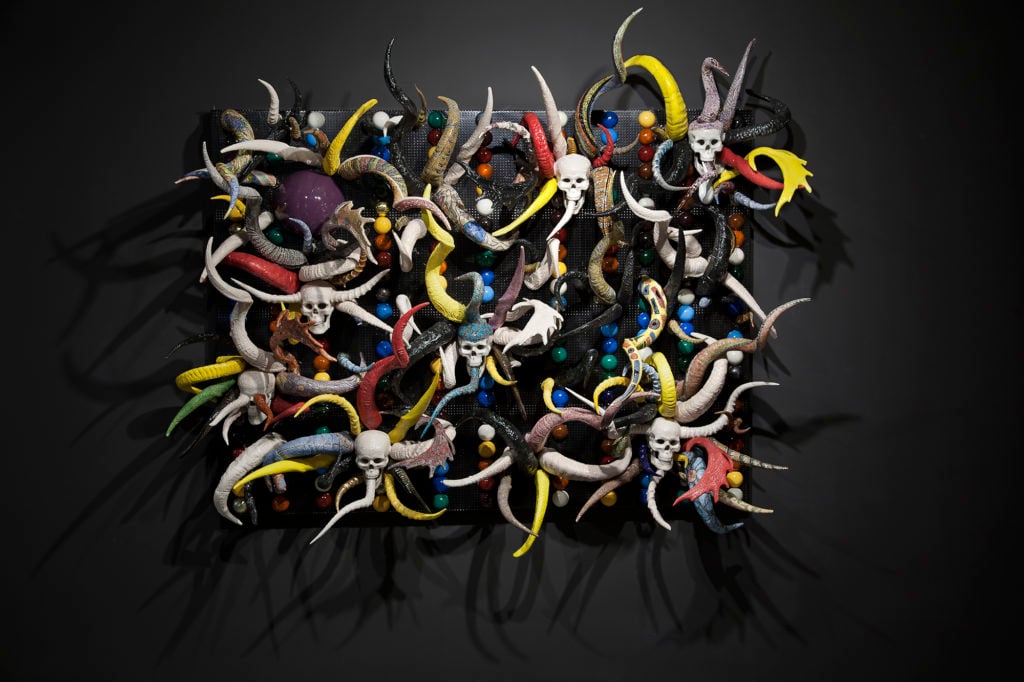
Ahmet Gunestekin, Dhul Qatnayn (2016). Courtesy Marolborough Gallery
Local galleries Zilberman and Art On, who like Pi Artworks have exhibited at the last 10 or 11 editions of the fair, also reported healthy sales of Turkish artists, for amounts ranging from around €2,000-30,000 and ₺20,000-35,000 (around €5,700-€10000) respectively, while the Italian Liquid Art System similarly sold ten works from their mostly European stable for €9,000-€12,000, with Marco Grassi’s gilded photorealistic paintings proving especially popular with collectors and fairgoers alike. (The unabshed instagrammed sensation of the fair, a sprawling maw of bleached skulls and tentacles from Ahmet Güneştekin at Marlborough gallery similarly suggests a predilection for the decorative and bombastic, which was reflected in much work on view at the fair although the curated Collector’s Stories exhibition reflected more mature tastes.)
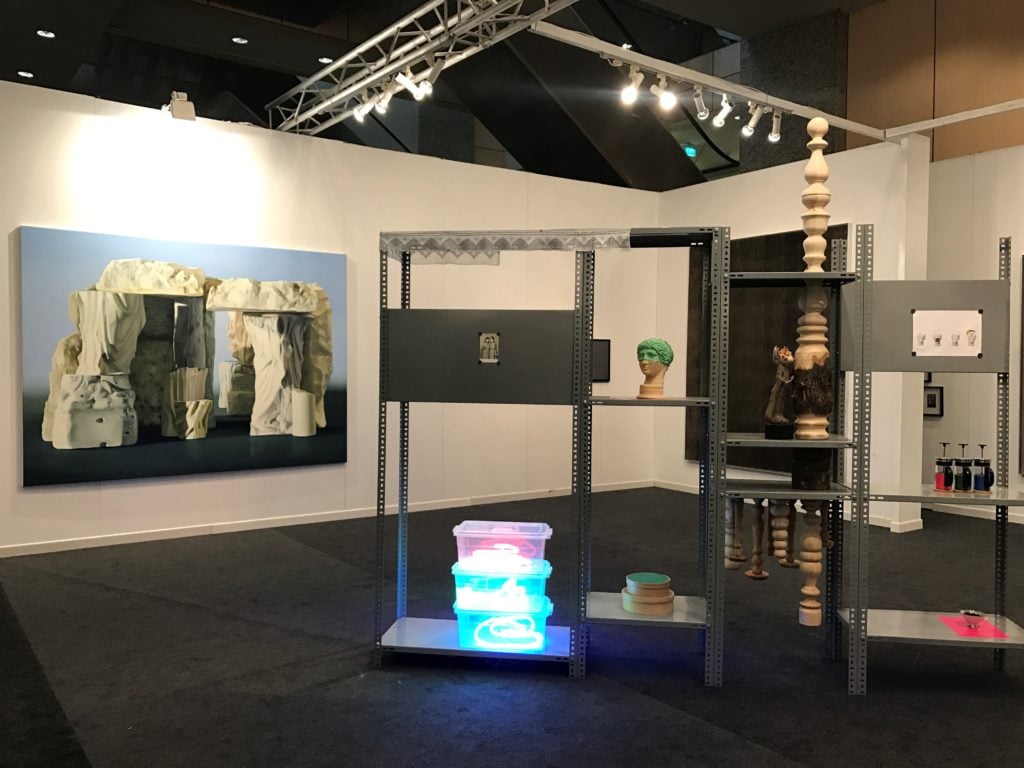
View of the booth of Pi Artworks at Contemporary Istanbul, 2016. Courtesy Contemporary Istanbul.
“I told the international galleries ‘look guys, this is the year of solidarity. You have to come back,’” fair chairman Ali Güreli said at the press conference, adding that “we never thought of cancelling the fair. Even if we had ended up with only 50 galleries we would have gone ahead.”
Local galleries echoed this sentiment, with Art On dealer Göksen Buğra saying that “given the tense political and economic situation we were not expecting too many sales” but were rather participating primarily to lend their support to the Turkish market, in hopes that the distracting glamour of this kind of event would “help people to feel happy here.” Omer Olcay, whose eponymous gallery sold eight large-scale cityscapes from Turkish master Devrim Erbil for undisclosed amounts, noted “there’s a belief that there’s a recession in Turkey but sales aren’t reflecting it yet” although there is a growing pressure from collectors who are expecting prices to fall.
Some galleries like Seoul’s Ab Gallery, who returned for the 11th time, responded to this effect by slashing prices in an effort to promote and establish their youngest Korean artists in the Turkish market.
Almost all of the international galleries that responded to Güreli’s plea were repeat exhibitors and heavily relied on the relationships they had cultivated in past years. First or second time participants lacking these networks generally struggled, although Savina Gallery from St Petersburg were pleased to move three of Konstantin Khudyakov’s attractive stereo light panels for $12-15,000 each.
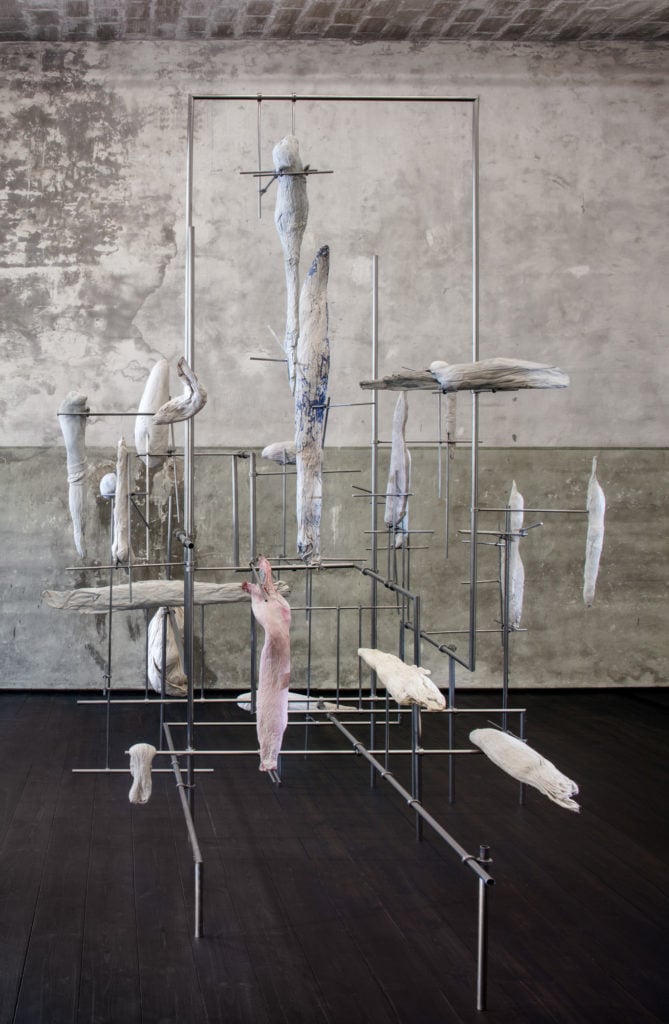
Adrian Hermanides, installation view at Xavierlaboulbenne gallery, Berlin
Some of the best work at the fair came from these younger galleries as with Istanbul’s The Pill gallery who, despite being only six months old had far-and-away the strongest presentation at the fair with a stunning booth that included a concrete floor installation from Deniz Gul, Ali Emir Tapan’s elegantly tempered mirrors, and a stunning Eva Nielsen diptych. Also notable was Berlin’s xavierlaboulbenne gallery’s refreshingly spare selection turning on the strategy of appropriation, which showed Lions, Adrian Hermanides’s remarkable new disarticulated assemblage of paving stones from Taksim square and steel scaffolding, along with a silver gelatin print from the same artist and a 1992 police poster (after Duchamps, an appropriation of the ur-appropriatior) from Elaine Sturtevant. Taken together they seem to present a subtle reminder and perhaps even a warning of the brewing instability outside the bubble of the fair.
Later last night, as the first public day drew to a close, 20 members of conservative nationalist group Erbakan Vakfı stormed the fair demanding the removal of a statue by Turkish artist Ali Elmaci which depicted the last Ottoman ruler Abdul Hamid II on a bikini-clad woman’s torso.
The fair responded with a statement from Güreli, saying “As a patron of the arts I cannot underline enough how artistic expression must be supported, celebrated and encouraged. We have always been opposed to censorship and support the gallery in their selection as well as the artist, who has exhibited his work at Contemporary Istanbul in previous editions.”
Nevertheless, Elmacı has decided to withdraw the work, saying “I have followed the reaction towards my artwork exhibited as part of Contemporary Istanbul and have decided to withdraw it from the exhibit in order not to create further tension, which distracts us from the joy of life and wears out our society to a great extent, especially during the current situation our country is experiencing. I am truly thankful to Contemporary Istanbul and all of the people who continually and enthusiastically contribute to the art scene as well as my friends for their support.”
In an early morning raid today, 11 members of Turkey’s leftist, pro-Kurdish opposition party HDP were detained in their own homes, and Twitter, Facebook, YouTube, and WhatsApp were blocked across the country, with internet access cut off in some Kurdish areas. Around 8 a.m. this morning, the first car bomb went off in protest in Diyarbakir, Turkey’s largest Kurdish-majority city.
As glasses clink and sales continue to be made at the fair, it’s hard not to think of Nero, fiddling as his city burns.
Contemporary Istanbul, 11th edition, takes place from November 3-6, 2016.